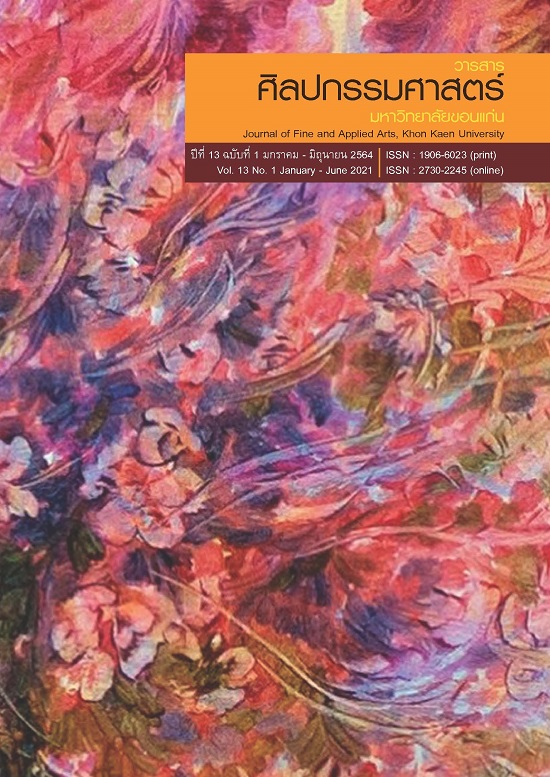From the Imagination to the Tangible: Sculptures of the Totally Blind Children
Main Article Content
Abstract
The researcher analyzes the individuals’ sculptures using the formalism approach that examines visual elements such as points, lines, shapes, forms, masses, tones of light and shadow, colors, spaces, and textures. Moreover, blind children, as well as others, were interviewed about the concepts of the artworks in order to gain a better understanding of the process of creativity and the perception of blind children.
The findings have shown that the creative process and the perception of each subject are different, especially with respect to color perception. Blind children have unique ways to remember and identify colors. They use the other remaining senses such as touch, taste, and feel. The majority of forms that blind children knew and used are geometric. Although their artworks are abstract and do not associate with meanings of the forms they have used, the beauty lies in its simplicity and innocence without any artificiality.
Article Details
Content and information in articles published in the Journal of Fine and Applied Arts of Khon Kaen University is regarded as the opinion and sole responsibility of the author(s) directly; therefore, editors are not obliged to agree to or share any responsibility with regard to the content and information that appears within these articles.
All articles, information, content, image, etc. that have been published in the Journal of Fine and Applied Arts of Khon Kaen University is the copyright of the Journal of Fine and Appllied Arts of Khon Kaen University. Any person or organization who wishes to distribute all or parts of the articles for further dissemination or other usage must first receive permission from the Journal of Fine and Applied Arts of Khon Kaen University before proceeding to do so.
References
ชลูด นิ่มเสมอ. (2557). องค์ประกอบของศิลปะ. พิมพ์ครั้งที่ 9. กรุงเทพฯ : อมรินทร์พริ้นติ้งแอนด์พับลิชชิ่ง.
สรัญญา เตรัตน์. (2560). เสียง สัมผัส กลิ่น มโนภาพ: ผัสสะในโลกของคนตาบอด. เอกสารประกอบการประชุมวิชาการ การสัมมนาเครือข่ายนักศึกษาระดับบัณฑิตศึกษา สาขาสังคมวิทยาและมานุษยวิทยา ครั้งที่ 16 ประจำปีการศึกษา 2559 ระหว่างวันที่ 29-30 มิถุนายน พ.ศ. 2560, พิษณุโลก, มหาวิทยาลัยนเรศวร.
Ingallina, M. (2016). What each color means, according to a blind person. Retrieved December 20, 2019, from https://thoughtcatalog.com/mia-ingallina/2016/08/what-each-color-means-according-to-a-blind-person/


